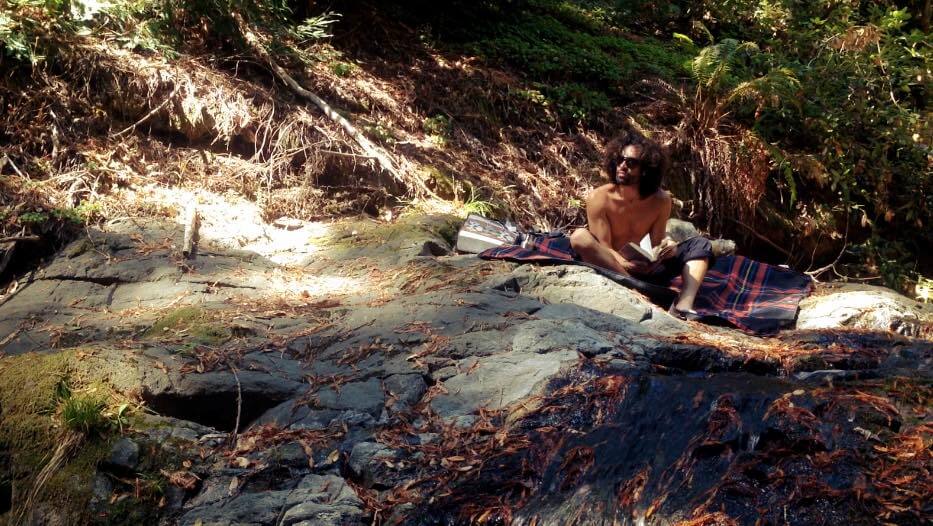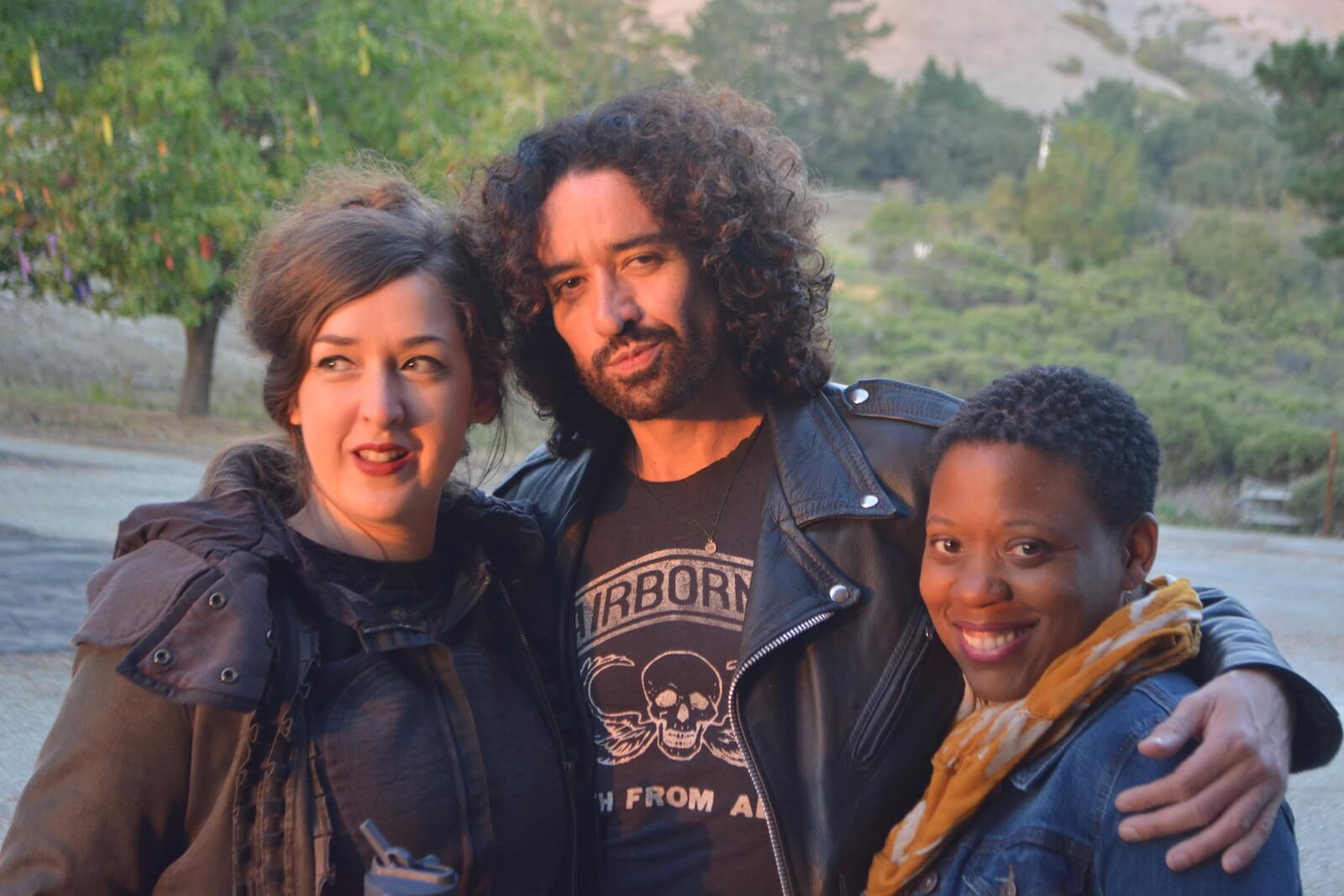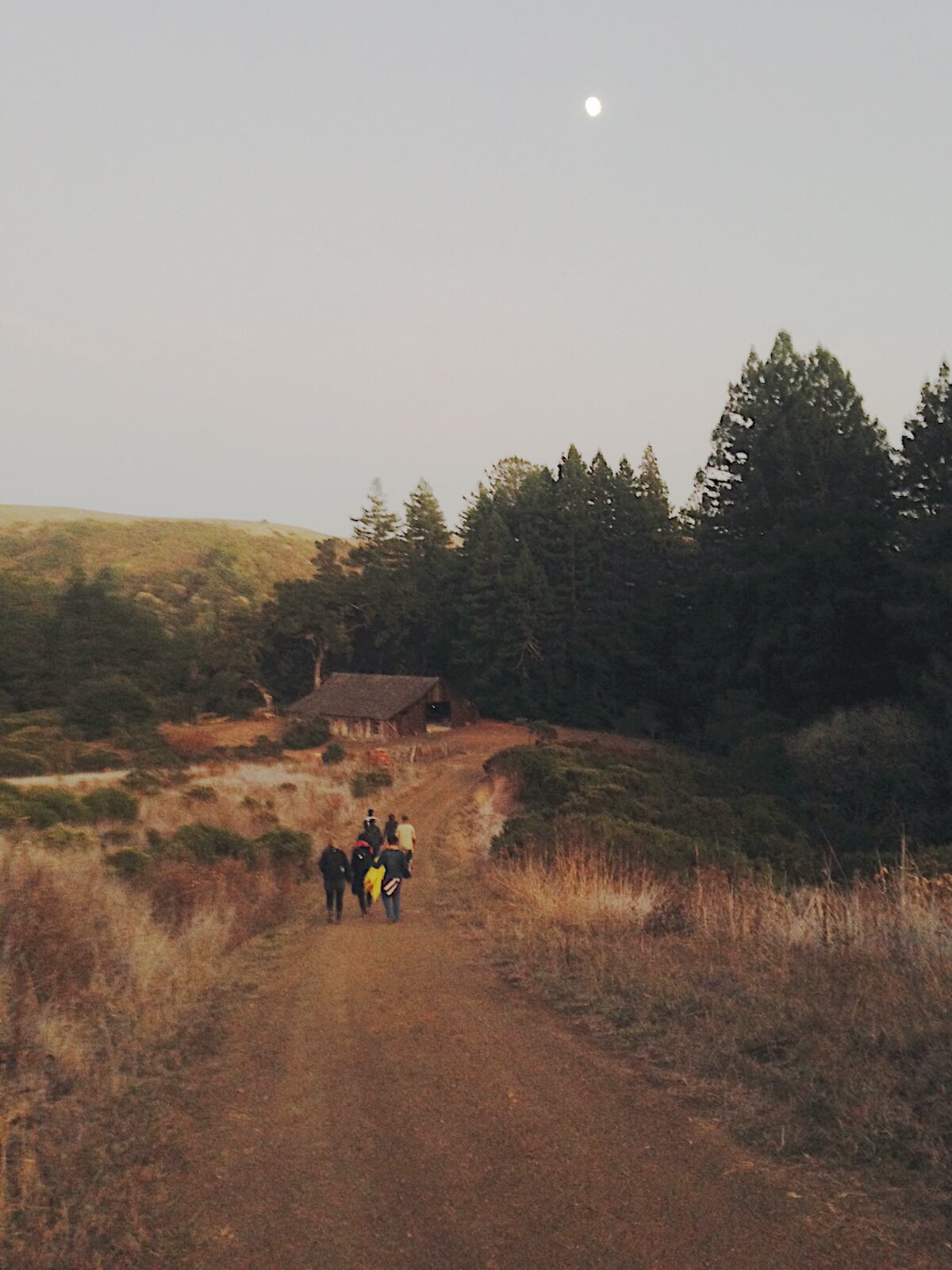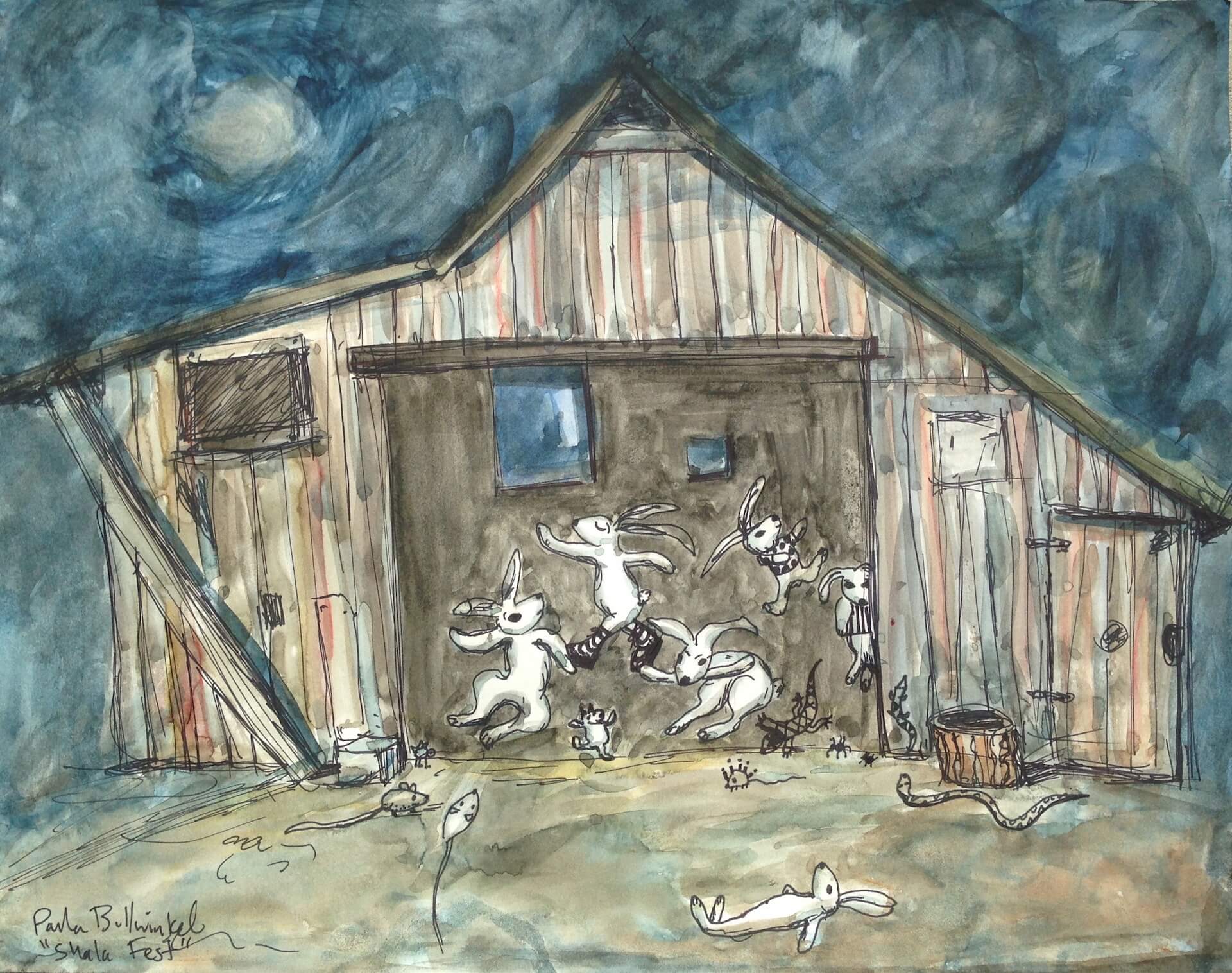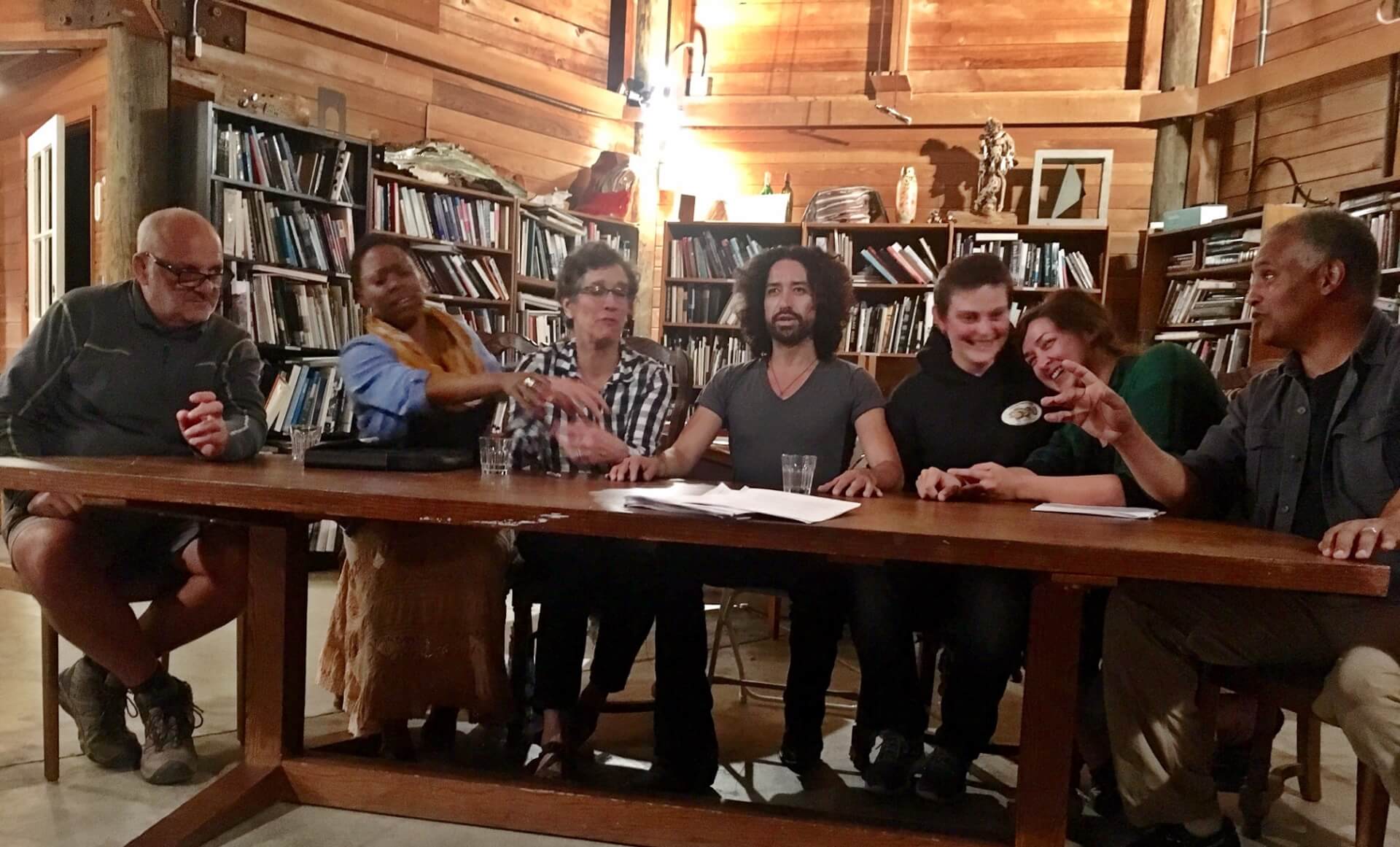Indeed, any artistic pursuit would seem profligate in the context of the social, cultural and financial hardships my family has known. And on the eve of my departure for the Santa Cruz Mountains, news broke regarding the Trump administration’s intentions to repeal DACA—a direct attack upon the children of Mexican immigrants throughout the country. “How could I possibly go into artistic isolation at this time?” I wondered, as the legitimacy of my community was being called into question. It had already proven difficult for me to rationalize being away for 29 days and the further I drove from home, the greater my uneasiness seemed to grow.
I am a first-generation Mexican American filmmaker currently developing the feature-length screenplay MÍSTICOS, a supernatural drama that explores spiritual development and gay identity amid the rise of exorcism in rural Mexico. My work is rooted in deep personal and political probing, in vulnerability, but the emotional vicissitudes I experienced upon my commute to Djerassi soon became as unsettling as that final stretch of Bear Gulch Road. White-knuckling up hairpin turns, the only way I could secure my bearings was by formulating rigid deadlines and drawing up strict objectives. As I wound ever closer, I summoned confidence by committing to a stern regimen that would severely limit my exploration or enjoyment. In this way, I crested to the Artists’ House not with excitement or relief, but with the intensity of a first-time artist-in-residence on a mission—an underrepresented filmmaker with a dogged sense of having something to prove.
But this anxiety-based rigidity Djerassi would not abide. Immediately, I was thrust into the company of 11 artists whose undeniable passion and broad perspectives were equaled only by their open hearts and generous smiles. Immediately, I was introduced to a sprawling, magical landscape that, to the very end, never ceased to steal my breath. Encouraged to “just be,” a vast sense of opportunity blossomed within me and suddenly, most unexpectedly, I was at ease.
And while I was able to accomplish a significant amount of work, it was not at all through the militant discipline a resurgent insecurity seemed to demand of me. Instead, my productivity was inspired (immensely improved, I’m convinced) by surrendering to the full scope of the Djerassi experience. For the following 29 days, I found furtive encouragement in works of art, both hidden and beckoning, throughout the mountain trails. I devoted long, meditative hours to Harrington Creek and spun a gleeful pirouette at the Old Barn. I was brought to tears, more often than I’d like to admit, by the splendor of the sun setting over the Pacific or by the family of deer that, as if sensing a block, leapt across my studio view, reminding me to stay the course, reminding me to keep writing.
I made it a point, also, to engage my fellow artists individually. This ushered me into a perpetual state of awe as I learned about their complex processes which, while diverse, nevertheless bespoke our common yearning to comprehend, communicate and connect. And connect we did: at table reads, open studios, nights marveling under the stars or over dinners so increasingly sumptuous it became difficult to fathom what tomorrow could possibly have left to bring.
But as my days at Djerassi began to come to a close, I couldn’t help but to reflect upon my initial feelings of uneasiness. Why had I been so quick to deny myself the fullness of the Djerassi experience? I came to realize how, over a number of years, my work had taken on a sense of struggle, isolation and rejection in an inevitable, at times pernicious, obligation to cultural representation and commercial viability within my industry. This, alongside troubling political events, had been sapping at my sense of spontaneity and creative enthusiasm in ways I couldn’t fully understand. Now, Djerassi was jolting me back into my original joy for the artistic process and this, in sharp contrast to my ascetic regimen of only a few weeks prior, would prove an irrepressible cause for celebration. I wanted to sing it from the mountaintop!
Whether we called it a séance, an invocation or a downright dance party didn’t ultimately matter as my fellow artists and I agreed to come together for a night of communal release and jubilation at the pirouette-worthy Old Barn. Some assistance from the ever-enthusiastic Djerassi staff and before I knew it, my fellow artists and I were parading down the ranch at dusk—a pilgrimage into nature with the express intention of affirming the joyful explorations that had so profoundly characterized our 29 days.
As depicted by Paula Bullwinkel’s whimsical watercolors, we did indeed hop like bunnies, slither like snakes and become altogether wild that night—the Old Barn becoming the site of our very own dance club. There couldn’t have been more than 13 of us there, but with the pulsating spirit of the historic barn, the pounding beat of the music, the intoxicating strobe of the lights and the overall immediacy of the moment, our celebration was electric, cathartic, and undeniably EPIC. Hiking our way back up the mountain later that night, our feet sore but our hearts full, I knew that there would never be any turning back from this all-consuming, utterly fulfilling residency experience.
As the youngest son from a Mexican immigrant family, my lifelong pursuit of a career in cinema may never come easily, but I hail from a resilient culture that, to spite life’s challenges, understands the power of community and the value of celebration—precisely as we experienced that moonlit night at the Old Barn. And as I approached my Middlebrook Studio, I caught a glimpse of my desk through the open window. I imagined myself sitting there, toiling long nights on my script and for the first time in a very long time I regarded myself with a level of compassion I didn’t realize had gone missing amid that dogged feeling of always having something to prove. At that moment, a heightened understanding of myself and my work seemed to settle upon me. The urgent themes I examine in my script resonated with greater meaning and I sensed how the Djerassi experience had provided me with precisely the fuel I would need to not simply stay my course, but to assume an entirely new level of momentum.
A few days later as I began my descent down the mountain, I vibrated with the overwhelming feeling of having been transformed. Gone were the pressures and anxieties I had, unwittingly, began to cultivate and become accustomed to. A sly smile and a quiet confidence now seemed to color my perspective and I sensed quite clearly how I would return to my life with the necessary courage to stand against social injustice and tell my stories with renewed passion, commitment and heart. So I strapped on my safety belt and gripped the steering wheel, a vast horizon before me. At last, I felt prepared to navigate the hairpin turns of Bear Gulch Road and my heart burst with gratitude for the winding life-path that had delivered me to Djerassi.

